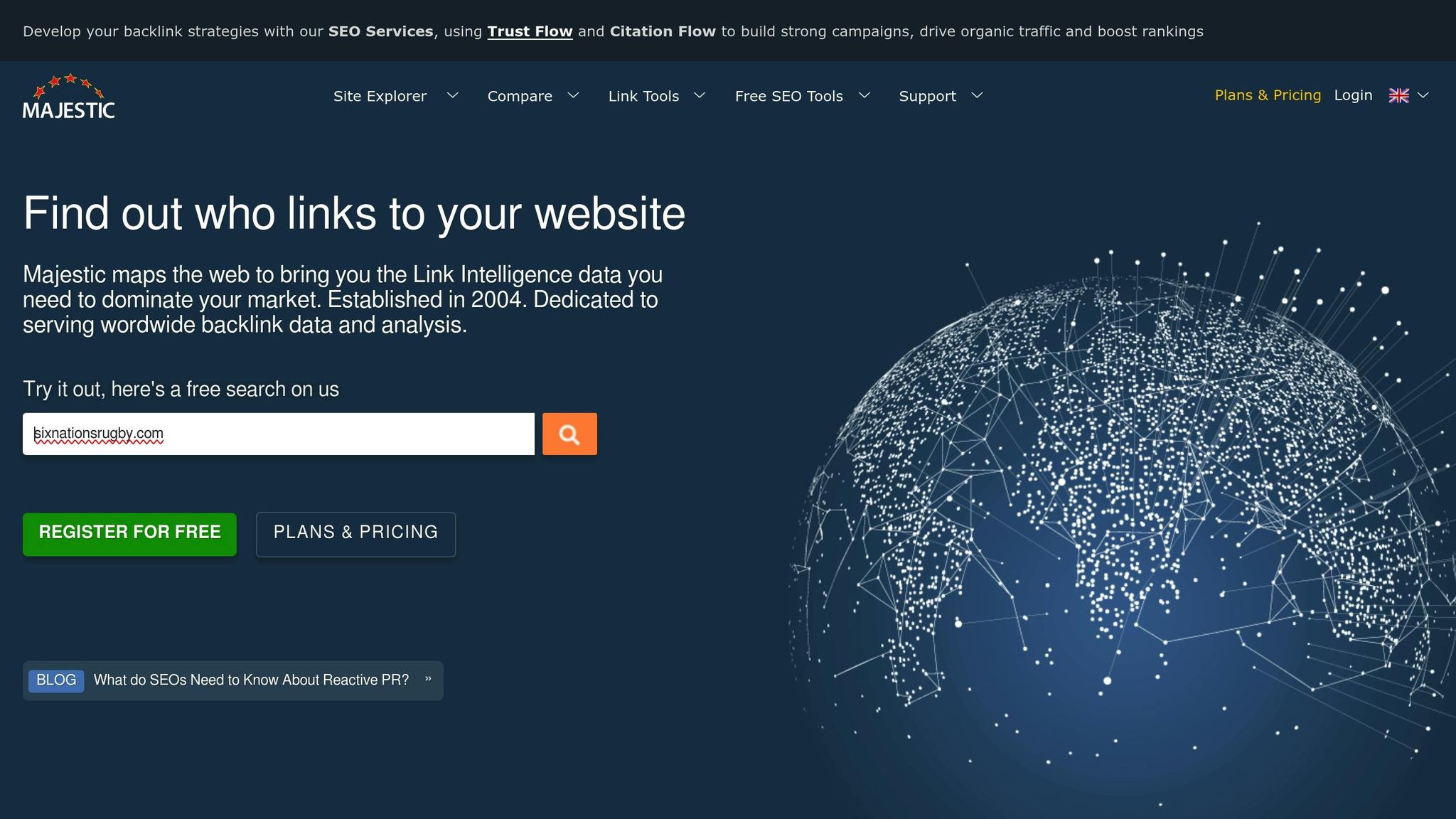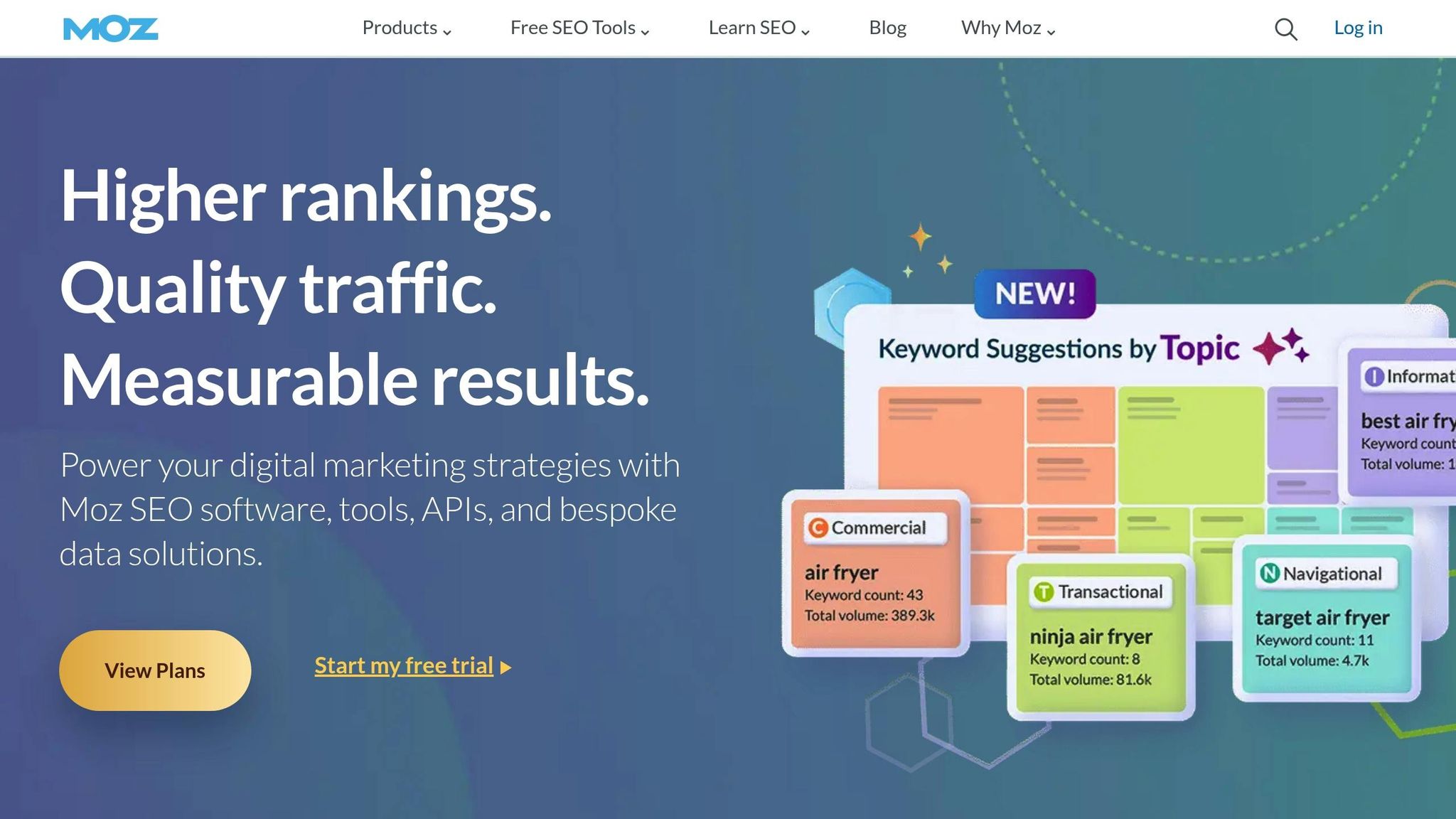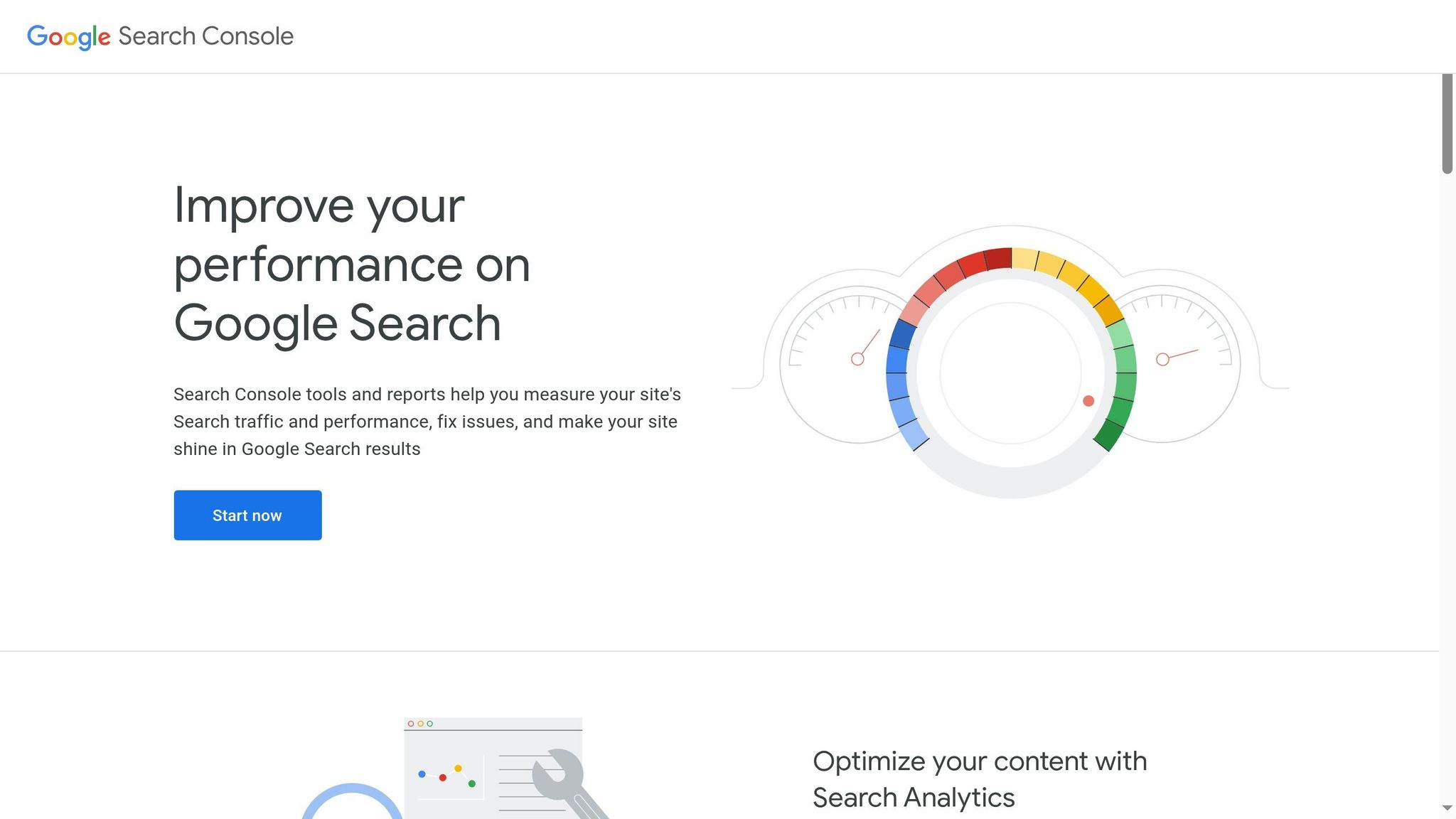Backlinks are essential for SEO, but not all backlinks are created equal. Understanding how different types of backlinks – like editorial, outreach, directory, and social links – impact your website can help you build a stronger SEO strategy. Here’s a quick summary:
- Editorial Backlinks: The most valuable, earned naturally through high-quality content.
- Outreach Backlinks: Actively obtained through guest posts or direct requests.
- Directory and Citation Links: Boost local SEO and credibility; useful for business listings.
- Social and Forum Links: Drive referral traffic; most are nofollow but can still be impactful.
- Dofollow vs. Nofollow Links: Dofollow links pass authority; nofollow links don’t directly boost rankings but help with traffic and visibility.
Tracking backlink growth by type ensures you focus on what works, build a balanced link profile, and avoid wasting resources. Tools like Ahrefs, Majestic, Moz, and Google Search Console can help you analyze your backlink data effectively.
| Tool | Monthly Cost | Best For | Key Strength |
|---|---|---|---|
| Ahrefs | $83+ | Advanced users | Real-time updates and filtering |
| Majestic | $41.67+ | Specialized analysis | Trust Flow and Citation Flow metrics |
| Moz Link Explorer | $49+ | Beginners | Spam Score and DA/PA tracking |
| Google Search Console | Free | Baseline insights | Direct data from Google |
Start by categorizing your backlinks, monitor growth trends regularly, and adjust your strategy based on what’s working. A mix of dofollow and nofollow links, along with diverse sources, is key to long-term success.
How to Easily Track Your Backlinks in Just a Few Clicks
Types of Backlinks You Need to Know
Getting familiar with the different types of backlinks is key to tracking and analyzing your link-building efforts. Each type contributes differently to your SEO strategy and holds varying levels of importance in search engine algorithms. Here’s a breakdown of the main types you’ll come across as you monitor your backlink growth.
Editorial Backlinks
Editorial backlinks are often considered the gold standard in link building. These links are earned when other websites reference your content because they find it valuable – not because you requested it. Typically, they come from high-authority publications, respected industry blogs, or sites with strict editorial guidelines. Since they’re earned organically, they’re seen as especially impactful for SEO.
For instance, Fractl’s "Perceptions of Perfection" campaign secured over 480 dofollow links from major platforms like BuzzFeed, Mashable, Yahoo, and The New York Times. This demonstrates how high-quality content can naturally attract powerful backlinks.
Outreach Backlinks
Outreach backlinks require a more hands-on approach. These are links you actively seek through guest posts, partnerships, or direct requests to website owners. While not as organic as editorial backlinks, they can still be highly effective when earned from authoritative and relevant sites.
Take guest posting, for example. By contributing valuable content to another site, you often receive a backlink in return. Similarly, direct outreach – where you contact bloggers, journalists, or site owners – can lead to strong backlinks if you clearly show the value of your content. Additionally, directories and other collaborative opportunities can help diversify your backlink profile.
Directory and Citation Links
Directory and citation links come from platforms like business directories or industry-specific listings. While they may not carry the same weight as editorial links, they’re vital for improving local SEO and establishing credibility. Listings on platforms like Google My Business, Yelp, or Yellow Pages help search engines confirm your business information. The key here is focusing on quality directories that are relevant and trustworthy, rather than chasing sheer numbers.
Social and Forum Links
Links from social media and forums are primarily about driving referral traffic and increasing visibility. Most social media links are nofollow, which means they don’t directly boost your rankings, but they can still send significant traffic to your site. Similarly, forum links – whether from Reddit, Quora, or niche communities – rarely pass SEO authority but can introduce your content to new audiences. Interestingly, nofollow links from these platforms can sometimes lead to dofollow links down the line as your content gains traction.
Follow vs. Nofollow Links
Understanding the difference between dofollow and nofollow links is essential for evaluating your backlink profile. Here’s a quick comparison:
| Feature | Dofollow Links | Nofollow Links |
|---|---|---|
| SEO Impact | Pass link equity, directly boosting rankings | No direct impact on rankings |
| Purpose | Enhance authority, improve rankings, drive organic traffic | Drive referral traffic, build visibility, diversify links |
| Common Locations | Blog posts, guest articles, editorial content | Comments, forums, social media, paid ads |
| Search Engine Bots | Crawled and followed | Crawled but not factored into rankings |
Dofollow links directly influence your site’s authority and search rankings, while nofollow links, though less impactful for rankings, can still drive traffic and improve brand exposure.
"I don’t think there is a perfect ratio of nofollow/follow backlinks. Ultimately, your link profile should look natural, and having a good mix of both is a big part of that."
- Alex Wright, SEO & Performance Marketing Director at Clicky Media
A well-rounded backlink profile includes both dofollow and nofollow links. An imbalance – like an unusually high number of follow links – can appear unnatural to search engines, so maintaining a healthy mix is crucial for long-term success.
Tools for Tracking Backlink Growth by Type
Picking the right tool to track your backlink growth can save you time and effort while providing valuable insights. Each tool offers unique features to help you analyze and organize backlink data, ultimately shaping your strategy and budget. Here’s a breakdown of some top options, along with their strengths and pricing.
Ahrefs

Ahrefs is known for its extensive database, updated every 15 minutes, and its powerful filtering options. With the Backlinks report 2.0, you can filter links by type – such as nofollow, UGC, and sponsored links – as well as by source type, language, and ratings. It also lets you sort backlinks by discovery date and organize them by Domain Rating (DR) and URL Rating (UR). The "Group similar links" feature helps simplify your data for easier analysis. For those targeting specific domains, Ahrefs allows filtering by top-level domains like .edu or .gov. Plans start at $83 per month (billed annually), offering a robust set of tools for in-depth backlink tracking.
Majestic

Majestic focuses exclusively on backlink analysis, offering unique metrics like Trust Flow and Citation Flow to evaluate link quality. Its standout feature is its detailed categorization system, which allows you to filter backlinks by trust levels and citation patterns. This makes it a valuable tool for those who want a deeper understanding of their backlink profile. Majestic’s plans start at $41.67 per month when paid annually, making it a cost-effective choice for specialized analysis.
Moz Link Explorer

Moz Link Explorer excels in tracking Domain Authority (DA) and Page Authority (PA) changes, while also providing anchor text distribution analysis. The platform separates dofollow and nofollow backlinks, giving you a clear view of your link profile. A key feature is its Spam Score filter, which helps identify potentially harmful backlinks. It also tracks lost links, allowing you to recover valuable opportunities. With its beginner-friendly interface, Moz is a great choice for those new to backlink analysis. Plans start at $49 per month, and a 7-day free trial is available.
Google Search Console

Google Search Console provides direct insights into the backlinks Google recognizes and values. While it lacks advanced filtering and metrics found in paid tools, it’s a reliable source for baseline data. You can filter by date and anchor text, identify which pages receive the most backlinks, and see your top referring domains. The data export feature allows for further analysis. Though it doesn’t offer domain authority scores or spam filtering, it’s an excellent free option to understand your backlink profile from Google’s perspective. Many SEO professionals use it alongside paid tools for cross-referencing data.
Below is a comparison of these tools, highlighting their costs, ideal users, and key strengths:
| Tool | Monthly Cost | Best For | Key Strength |
|---|---|---|---|
| Ahrefs | $83+ | Advanced users | Comprehensive filtering and real-time updates |
| Majestic | $41.67+ | Specialized backlink analysis | Trust Flow and Citation Flow metrics |
| Moz Link Explorer | $49+ | Beginners | Spam Score and DA/PA tracking |
| Google Search Console | Free | Baseline insights | Direct backlink data from Google |
Trying out different tools can help you find the one that fits your specific needs. Many professionals rely on a combination of Google Search Console for foundational data and paid tools for deeper analysis and filtering.
sbb-itb-880d5b6
How to Monitor Backlink Growth Trends
Keeping tabs on backlink growth involves categorizing your data and tracking changes over time. With 95% of pages lacking backlinks, consistently monitoring your links can give you a competitive edge. Using the backlink types and tools we’ve already discussed, here’s how you can efficiently monitor growth trends.
Organizing Backlinks by Type
Start by sorting your backlinks into categories like editorial, outreach, directory/citation, and social/forum links. Don’t forget to differentiate between dofollow and nofollow links, as this distinction plays a crucial role in understanding their impact.
Take advantage of your tracking tool’s filtering options to organize these links. Generating separate reports for each category keeps things clean and makes it easier to analyze specific types of backlinks.
Tracking Growth Over Time
Once your backlinks are categorized, the next step is to track their evolution regularly. A consistent monitoring schedule is key. For most businesses, monthly reviews are sufficient to spot trends and ensure link quality. However, if you’re running an active campaign, more frequent checks – like weekly – can be beneficial.
During each review, log the number of new backlinks along with quality metrics such as domain authority and trust flow. Keep an eye on lost links, too, and note which categories experience higher turnover. This data can reveal patterns and help you identify areas for improvement.
It’s also helpful to monitor referring domains alongside individual backlinks. Links from a variety of domains carry more weight than multiple links from the same source.
"Monitoring backlinks is all about understanding the bigger picture of how links impact your SEO."
Don’t overlook anchor text distribution, either. A natural backlink profile should include a mix of branded keywords, generic terms like "click here", and partial-match keywords related to your content. By tracking anchor text within each link category, you can ensure your profile stays balanced and avoids penalties.
Creating Visual Reports
Turn your tracking data into visual reports to make trends easier to spot. Use line graphs to show acquisition trends, bar charts to compare link quality, and dashboard-style summaries for a quick overview.
Monthly or quarterly reports can combine these visuals with key stats, such as the total number of links acquired, average quality scores, and growth percentages by category. These reports not only help you measure the success of your campaigns but also guide your future strategies.
Many tools allow you to export data into spreadsheets or visualization software, streamlining the reporting process. Consider setting up dashboards that update automatically with new data – this saves time and ensures you always have the latest insights at your fingertips.
How to Analyze and Use Growth Patterns
Using your tracked data, you can uncover actionable insights to refine your link-building strategy. By analyzing your backlink data, you’ll better understand the SEO impact of your efforts. Considering that 94% of all online content gets zero links, identifying what works for your site can give you a real edge.
Finding Your Best Growth Sources
Start by pinpointing which types of links are delivering the strongest results for your website. Use metrics like domain authority and organic or referral traffic to evaluate their impact.
Editorial links, for instance, often reflect strong content quality. If you notice consistent growth in this area, it’s a good sign that your content resonates with respected voices in your industry.
Outreach backlinks, such as those from guest blogging, may show different trends. A well-executed guest blogging campaign might lead to steady monthly growth, while a one-time PR effort could create a temporary spike. On the other hand, directory and citation links tend to grow more predictably and are useful for building foundational authority.
"Another important metric is the organic traffic of the linking domain. The number of visits helps Google understand how authoritative the resource linking to your site is, which in turn helps determine the quality of the donor."
– Oksana Babenko, SEO Specialist at Promodo
Pay attention to sites that link to you repeatedly. These often signal strong relationships worth maintaining, as repeated high-quality links indicate trust and mutual value.
Reading Growth Patterns
Steady growth is a hallmark of a healthy SEO strategy. Consistent, linear growth reflects reliable efforts, while natural exponential spikes – like those from a viral piece – should eventually level off. Sustained spikes, however, can raise red flags with search engines.
Sudden spikes or drops in backlinks require immediate attention. A spike might be the result of a successful content promotion or a mention in a major publication. Drops, on the other hand, could be due to lost partnerships, content being removed, or technical issues on linking sites.
Seasonal patterns are also worth noting. For example, B2B companies may see a rise in link activity during industry conference seasons, while retail sites often gain more links during the holidays. Recognizing these natural rhythms helps you set realistic expectations and align your strategy.
Improving Your Link-Building Strategy
Identify what’s working and double down on those tactics. If editorial links are driving the best results, focus on creating expert-level content that appeals to journalists and editors.
Look at your competitors to spot opportunities. If they’re consistently earning links from directories or industry publications that you’re not featured in, those are clear areas to target.
"A well-formed, unique strategy for building a backlink profile is already half the success in SEO promotion of your site."
– Oksana Babenko, SEO Specialist at Promodo
Set performance goals based on your historical data. For instance, if you’ve been averaging 12 quality backlinks per month, aim for 15–18 in the next period. This approach ensures steady progress while staying natural in the eyes of search engines.
Diversify your methods to scale successful strategies. If guest blogging is working well, expand your efforts to include more niche publications. If directory listings are providing steady growth, explore additional directories that are relevant to your industry. The idea is to build on what’s working rather than constantly chasing new tactics.
Monitor your Authority Score as you acquire links. Gradual improvements in domain authority are a strong indicator of meaningful progress, even if individual campaigns seem slow to show results.
Finally, reclaim lost links to regain momentum. If certain links are disappearing, investigate the cause – whether it’s due to content updates, site migrations, or changes in relationships. Recovering lost links is often quicker and easier than building new ones, and it can help you maintain a steady growth trajectory. These strategies will guide your next steps in fine-tuning your link-building efforts.
Next Steps
Once you’ve established a solid tracking foundation, it’s time to focus on building links that bring long-term value and strengthen relationships within your industry.
Start by setting up a regular monitoring routine. Take time to audit your backlink profile periodically. This helps you spot opportunities and address potential problems before they can hurt your SEO performance.
Define clear KPIs – like domain authority, keyword rankings, and referral traffic – and use project management tools to streamline your outreach efforts and keep track of progress. It’s worth noting that 67% of domains analyzed by Ahrefs have at least one toxic backlink, so keeping an eye on quality is just as important as tracking growth.
Shift your mindset from simply acquiring links to building meaningful relationships. Effective link building is about creating genuine connections within your industry, which can lead to long-term benefits. Collaborate with other websites and engage with influencers in your niche to open up natural opportunities for links and partnerships.
Content is key. Focus on creating diverse, evergreen, and data-driven pieces that attract a variety of backlinks. To establish authority in your field, develop in-depth content that explores your main topics from different perspectives.
Stay flexible. As your tracking uncovers new trends, adjust your strategies to keep up with the ever-changing digital landscape. What works today might not work tomorrow, and your data will help guide these shifts.
Don’t forget the importance of a balanced backlink profile. Tracking both dofollow and nofollow links is essential. Interestingly, 54% of SEOs see value in nofollow links for their backlink strategies. A mix of backlinks from various types of sites helps boost your credibility and authority. These steps align perfectly with the strategies we’ve already explored.
FAQs
How can I identify which type of backlink will boost my website’s SEO the most?
When it comes to SEO, dofollow links tend to carry the most weight. These links transfer link equity, which can boost your website’s domain authority and improve its position in search engine results.
That said, having a balanced backlink profile is crucial. Incorporating a mix of links – like nofollow links and branded mentions – helps establish credibility and minimizes the risk of search engine penalties. To stay on top of your strategy, use trusted tools to regularly track the growth and quality of your backlinks. This approach can keep your SEO efforts on the right track for the long haul.
What are the best ways to earn high-quality editorial backlinks?
To secure top-notch editorial backlinks, you need to center your efforts on producing content that people want to link to and share. Think along the lines of detailed guides, research-backed studies, or one-of-a-kind resources that genuinely connect with your audience.
Another key tactic is building strong relationships with industry leaders, journalists, or respected publishers. By diving into digital PR, you can create newsworthy pieces or offer expert insights that catch their attention. These approaches not only improve your backlink profile but also help strengthen your site’s authority and visibility in the long run.
What is the best way to maintain a natural balance between dofollow and nofollow backlinks?
To keep your backlink profile looking natural, aim for a healthy balance of dofollow and nofollow links. While the exact ratio depends on your niche, a general guideline is around 70–80% dofollow and 20–30% nofollow. This mix helps show search engines that your link-building efforts are genuine and trustworthy.
The key is to prioritize high-quality links from reputable websites, no matter the type. A diverse and well-rounded backlink profile not only boosts your SEO but also lowers the chances of penalties from search engines.




